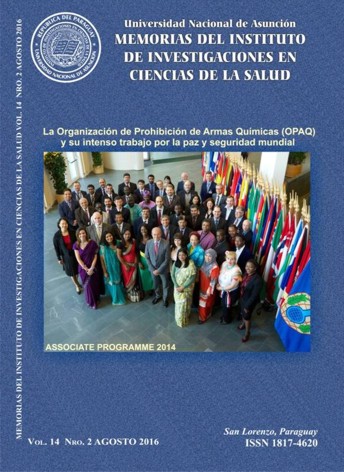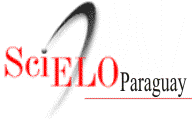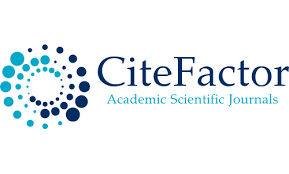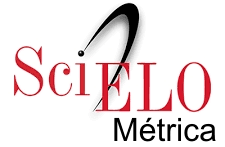Presente y futuro de los anticuerpos recombinantes terapéuticos
Palabras clave:
inmunoglobulinas, anticuerpos monoclonales, proteínas recombinantes, anticuerpos terapéuticosResumen
Los anticuerpos constituyen un componente fundamental del sistema inmune, permitiendo el reconocimiento con alta especificidad y posterior destrucción de moléculas extrañas. Los anticuerpos monoclonales, producidos por la tecnología del hibridoma, presentan desventajas para su uso en terapia humana debido a su origen en una especie diferente. La ingeniería genética posibilitó la utilización de los anticuerpos monoclonales para terapias humanas, generando los anticuerpos recombinantes terapéuticos. Así, los anticuerpos recombinantes se han transformado en un importante grupo de fármacos; con decenas de ellos aprobados para terapia humana y cientos en desarrollo. Se utilizan con éxito como tratamiento para un amplio rango de patologías, tales como cáncer, autoinmunidad e infecciones, siendo desde hace años el biofármaco con mayores ventas. Inicialmente todos los anticuerpos recombinantes terapéuticos presentaban la estructura convencional de los anticuerpos. Sin embargo, más recientemente, se han generado nuevos diseños que no poseen las características estructurales naturales, como los anticuerpos de simple cadena y bi-específicos. Debido al desarrollo y éxito de la tecnología de anticuerpos recombinantes, se espera un aumento constante en el número de anticuerpos terapéuticos contra nuevos blancos, además de la generación de nuevas estructuras, usos y estrategias terapéuticas. En esta revisión, nos centraremos en las características estructurales y los nuevos formatos de anticuerpos, así como su aplicación clínica en el tratamiento de diversas patologías. Además analizaremos los nuevos formatos de anticuerpos que se encuentran en el mercado y la aparición de los anticuerpos biosimilares.
Descargas
Citas
Cosimi AB, Colvin RB, Burton RC, Rubin RH, Goldstein G, Kung PC, et al. Use of monoclonal antibodies to T-cell subsets for immunologic monitoring and treatment in recipients of renal allografts. N Engl J Med. 1981 Aug 6 ;305(6):308–14.
Thistlethwaite JR, Cosimi AB, Delmonico FL, Rubin RH, Talkoff-Rubin N, Nelson PW, et al. Evolving use of OKT3 monoclonal antibody for treatment of renal allograft rejection. Transplantation . 1984 Dec;38(6):695–701.
Aggarwal S. What’s fueling the biotech engine - 2012 to 2013. Nat Biotechnol. 2014;32(1):32–9.
Ecker DM, Jones SD, Levine HL. The therapeutic monoclonal antibody market. MAbs. 2015;7(1):9–14.
Deisenhofer J. Crystallographic refinement and atomic models of a human Fc fragment and its complex with fragment B of protein A from Staphylococcus aureus at 2.9- and 2.8-A resolution. Biochemistry. 1981 Apr 28 ;20(9):2361–70.
Köhler G, Milstein C. Continuous cultures of fused cells secreting antibody of predefined specificity. Nature. 1975 Aug 7 ;256(5517):495–7.
Legouffe E, Liautard J, Gaillard JP, Rossi JF, Wijdenes J, Bataille R, et al. Human anti-mouse antibody response to the injection of murine monoclonal antibodies against IL-6. Clin Exp Immunol. 1994 Nov ;98(2):323–9.
Klee GG. Human anti-mouse antibodies. Arch Pathol Lab Med . 2000 Jun ;124(6):921–3.
Dillman RO, Shawler DL, McCallister TJ, Halpern SE. Human anti-mouse antibody response in cancer patients following single low-dose injections of radiolabeled murine monoclonal antibodies. Cancer Biother. 1994 ;9(1):17–28.
Takeda S, Naito T, Hama K, Noma T, Honjo T. Construction of chimaeric processed immunoglobulin genes containing mouse variable and human constant region sequences. Nature. 1985; 314(6010):452–4.
Wells WA. Eek, a XenoMouse: Abgenix, Inc. Chem Biol. 2000 Aug;7(8):R185–6.
Davis CG, Gallo ML, Corvalan JR. Transgenic mice as a source of fully human antibodies for the treatment of cancer. Cancer Metastasis Rev. 1999;18(4):421–5.
Bazan J, Całkosiński I, Gamian A. Phage display — A powerful technique for immunotherapy. 2012;(December):1829–35.
Hust M, Thie H, Schirrmann T, Dübel S. Antibody Phage Display. 2008
Daly SJ, Dillon PP, Manning BM, Dunne L, Killard A, Kennedy RO. Production and Characterization of Murine Single Chain Fv Antibodies to Aflatoxin B 1 Derived From a Pre-immunized Antibody Phage Display Library System. 2002;1:255–74.
Wrammert J, Smith K, Miller J, Langley WA, Kokko K, Larsen C, et al. Rapid cloning of high-affinity human monoclonal antibodies against influenza virus. Nature. 2008 May 29 ;453(7195):667–71.
Bird RE, Walker BW. Single chain antibody variable regions. Trends Biotechnol . 1991 Apr ;9(4):132–7.
Huston JS, Tai MS, McCartney J, Keck P, Oppermann H. Antigen recognition and targeted delivery by the single-chain Fv. Cell Biophys . ;22(1-3):189–224.
Huston JS, Levinson D, Mudgett-Hunter M, Tai MS, Novotný J, Margolies MN, et al. Protein engineering of antibody binding sites: recovery of specific activity in an anti-digoxin single-chain Fv analogue produced in Escherichia coli. Proc Natl Acad Sci U S A; 1988 Aug ;85(16):5879–83.
Weidle UH, Kontermann RE, Brinkmann U. Tumor-antigen-binding bispecific antibodies for cancer treatment. Semin Oncol. Elsevier; 2014;41(5):653–60.
Brischwein K, Parr L, Pflanz S, Volkland J, Lumsden J, Klinger M, et al. Strictly target cell-dependent activation of T cells by bispecific single-chain antibody constructs of the BiTE class. J Immunother . ;30(8):798–807.
Kaneko E, Niwa R. Optimizing Therapeutic Antibody Function. BioDrugs . 2011;25(1):1–11.
Lazar GA, Dang W, Karki S, Vafa O, Peng JS, Hyun L, et al. Engineered antibody Fc variants with enhanced effector function. Proc Natl Acad Sci U S A. 2006 Mar 14 ;103(11):4005–10.
Shields RL, Namenuk AK, Hong K, Meng YG, Rae J, Briggs J, et al. High resolution mapping of the binding site on human IgG1 for Fc gamma RI, Fc gamma RII, Fc gamma RIII, and FcRn and design of IgG1 variants with improved binding to the Fc gamma R. J Biol Chem . 2001 Mar 2 ;276(9):6591–604.
Stavenhagen JB, Gorlatov S, Tuaillon N, Rankin CT, Li H, Burke S, et al. Fc optimization of therapeutic antibodies enhances their ability to kill tumor cells in vitro and controls tumor expansion in vivo via low-affinity activating Fcgamma receptors. Cancer Res . 2007 Sep 15 ;67(18):8882–90.
Umaña P, Jean-Mairet J, Moudry R, Amstutz H, Bailey JE. Engineered glycoforms of an antineuroblastoma IgG1 with optimized antibody-dependent cellular cytotoxic activity. Nat Biotechnol. 1999 Feb ;17(2):176–80.
Schuster M, Umana P, Ferrara C, Brünker P, Gerdes C, Waxenecker G, et al. Improved effector functions of a therapeutic monoclonal Lewis Y-specific antibody by glycoform engineering. Cancer Res . 2005 Sep 1 ;65(17):7934–41.
Mössner E, Brünker P, Moser S, Püntener U, Schmidt C, Herter S, et al. Increasing the efficacy of CD20 antibody therapy through the engineering of a new type II anti-CD20 antibody with enhanced direct and immune effector cell-mediated B-cell cytotoxicity. Blood . 2010 Jun 3 ;115(22):4393–402.
Subramaniam JM, Whiteside G, McKeage K, Croxtall JC. Mogamulizumab: first global approval. Drugs . 2012 Jun 18 ;72(9):1293–8.
Ridgway JB, Presta LG, Carter P. ―Knobs-into-holes‖ engineering of antibody CH3 domains for heavy chain heterodimerization. Protein Eng . 1996 Jul ;9(7):617–21.
Gunasekaran K, Pentony M, Shen M, Garrett L, Forte C, Woodward A, et al. Enhancing antibody Fc heterodimer formation through electrostatic steering effects: applications to bispecific molecules and monovalent IgG. J Biol Chem . American Society for Biochemistry and Molecular Biology; 2010 Jun 18 ;285(25):19637–46.
Scott AM, Wolchok JD, Old LJ. Antibody therapy of cancer. Nat Rev Cancer . Nature Publishing Group; 2012;12(4):278–87.
Scott AM, Allison JP, Wolchok JD. Monoclonal antibodies in cancer therapy. Cancer Immun . 2012;12(14):1–8.
Maloney DG, Liles TM, Czerwinski DK, Waldichuk C, Rosenberg J, Grillo-Lopez A, et al. Phase I clinical trial using escalating single-dose infusion of chimeric anti-CD20 monoclonal antibody (IDEC-C2B8) in patients with recurrent B-cell lymphoma. Blood . 1994 Oct 15 ;84(8):2457–66.
Eisenbeis CF, Caligiuri MA, Byrd JC. Rituximab: converging mechanisms of action in non-Hodgkin’s lymphoma? Clin Cancer Res. 2003 Dec 1 ;9(16 Pt 1):5810–2.
Spector NL, Blackwell KL. Understanding the mechanisms behind trastuzumab therapy for human epidermal growth factor receptor 2-positive breast cancer. J Clin Oncol . 2009 Dec 1 ;27(34):5838–47.
Hudis CA. Trastuzumab--mechanism of action and use in clinical practice. N Engl J Med . 2007 Jul 5 ;357(1):39–51.
Gunturu KS, Woo Y, Beaubier N, Remotti HE, Saif MW. Gastric cancer and trastuzumab: first biologic therapy in gastric cancer. Ther Adv Med Oncol . SAGE Publications; 2013 Mar ;5(2):143–51.
Lionakis MS, Lahdenranta J, Sun J, Liu W, Lewis RE, Albert ND, et al. Development of a ligand-directed approach to study the pathogenesis of invasive aspergillosis. Infect Immun. 2005;73(11):7747–58.
Nahta R, Hung M-C, Esteva FJ. The HER-2-targeting antibodies trastuzumab and pertuzumab synergistically inhibit the survival of breast cancer cells. Cancer Res . 2004 Apr 1;64(7):2343–6.
Jiang H, Rugo HS. Human epidermal growth factor receptor 2 positive (HER2+) metastatic breast cancer: how the latest results are improving therapeutic options. Ther Adv Med Oncol . 2015;7(6):321–39.
Hurwitz H, Fehrenbacher L, Novotny W, Cartwright T, Hainsworth J, Heim W, et al. Bevacizumab plus irinotecan, fluorouracil, and leucovorin for metastatic colorectal cancer. N Engl J Med . 2004 Jun 3 ;350(23):2335–42.
Ribatti D. From the discovery of monoclonal antibodies to their therapeutic application: An historical reappraisal. Immunol Lett . Elsevier B.V.; 2014;161(1):96–9.
Fan G, Wang Z, Hao M, Li J. Bispecific antibodies and their applications. J Hematol Oncol . 2015 ;8:130.
Chan AC, Carter PJ. Therapeutic antibodies for autoimmunity and inflammation. Nat Rev Immunol. 2010;10(5):301–16.
Lipsky PE, van der Heijde DM, St Clair EW, Furst DE, Breedveld FC, Kalden JR, et al. Infliximab and methotrexate in the treatment of rheumatoid arthritis. Anti-Tumor Necrosis Factor Trial in Rheumatoid Arthritis with Concomitant Therapy Study Group. N Engl J Med . 2000 Nov 30 ;343(22):1594–602.
Bykerk VP. Adalimumab for early rheumatoid arthritis. Expert Rev Clin Immunol . 2008 Mar ;4(2):157–63. 7
Fleischmann RM, Halland A-M, Brzosko M, Burgos-Vargas R, Mela C, Vernon E, et al. Tocilizumab inhibits structural joint damage and improves physical function in patients with rheumatoid arthritis and inadequate responses to methotrexate: LITHE study 2-year results. J Rheumatol . 2013 Feb ;40(2):113–26.
Ghosh D, Lee Y, Thomas S, Kohli AG, Yun DS, Belcher AM, et al. M13-templated magnetic nanoparticles for targeted in vivo imaging of prostate cancer. Nat Nanotechnol. 2012;7(10):677–82.
Ghosh S, Goldin E, Gordon FH, Malchow HA, Rask-Madsen J, Rutgeerts P, et al. Natalizumab for active Crohn’s disease. N Engl J Med . 2003 Jan 2 ;348(1):24–32.
Dziewierz A, Rakowski T, Dudek D. Abciximab in the management of acute myocardial infarction with ST-segment elevation: Evidence-based treatment, current clinical use, and future perspectives. Ther Clin Risk Manag. 2014;10(1):567–76.
Gouni-Berthold I, Berthold HK. PCSK9 antibodies for the treatment of hypercholesterolemia. Nutrients . 2014 Dec ;6(12):5517–33.
Foltz IN, Karow M, Wasserman SM. Evolution and emergence of therapeutic monoclonal antibodies what cardiologists need to know. Circulation. 2013;127(22):2222–30.
Gouni-Berthold I, Berthold HK. PCSK9 antibodies for the treatment of hypercholesterolemia. Nutrients. 2014;6(12):5517–33.
Lanari M. VS. AS. GS. FG. The use of humanized monoclonal antibodies for the prevention of respiratory syncytial virus infection. Clin Dev Immunol. 2013;2013.
Kummerfeldt CE. Raxibacumab: Potential role in the treatment of inhalational anthrax. Infect Drug Resist. 2014;7:101–9.
Teixeira FV, Kotze PG, Damião AOMC. Anvisa Approves the First Biosimilar Monoclonal Antibody Based on Comparability in Brazil. Arq Gastroenterol. 2016;53(2):60–1.
Uchida N, Sambe T, Yoneyama K, Fukazawa N, Kawanishi T, Kobayashi S, et al. A first-in-human phase 1 study of ACE910, a novel factor VIII-mimetic bispecific antibody, in healthy subjects. Blood . 2016 Mar 31;127(13):1633–41.














